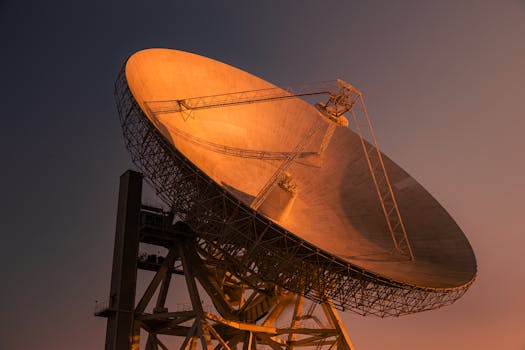GEO Satellites: Understanding the Technology and Applications

GEO Satellites: Understanding the Technology and Applications
GEO satellites, or Geostationary Earth Orbit satellites, are a type of satellite that orbits the Earth at an altitude of approximately 36,000 kilometers, remaining stationary relative to a fixed point on the planet. This unique characteristic allows GEO satellites to provide continuous coverage of a specific region, making them ideal for a variety of applications, including telecommunications, weather forecasting, and navigation.
The concept of GEO satellites was first proposed by scientist Arthur C. Clarke in 1945, and the first GEO satellite, Syncom 2, was launched in 1963. Since then, the technology has advanced significantly, with modern GEO satellites featuring high-gain antennas, advanced propulsion systems, and sophisticated payload designs. Today, there are over 500 GEO satellites in orbit, providing a wide range of services, including television broadcasting, internet connectivity, and mobile communications.
How GEO Satellites Work
GEO satellites operate by transmitting and receiving signals to and from Earth stations, which are equipped with large antennas and sophisticated receiver systems. The satellites use a combination of solar panels and batteries to generate power, and are typically designed to operate for 15 years or more. The signals transmitted by GEO satellites are received by Earth stations, which then re-transmit them to other satellites or to ground-based users.
One of the key advantages of GEO satellites is their ability to provide global coverage, enabling communication between different regions of the world. They also offer high-gain antennas, which allow for more efficient transmission and reception of signals, reducing the need for large and expensive ground-based infrastructure. Additionally, GEO satellites can be used to provide backup connectivity in the event of a disaster or network outage, making them an essential component of modern telecommunications networks.
Applications of GEO Satellites
GEO satellites have a wide range of applications, including telecommunications, weather forecasting, navigation, and earth observation. In the telecommunications sector, GEO satellites are used to provide internet connectivity, mobile communications, and television broadcasting. They are also used to support disaster recovery and emergency response efforts, providing critical communication services in the aftermath of a disaster.
In the field of weather forecasting, GEO satellites are used to monitor cloud patterns, track storms, and predict weather patterns. They are also used to monitor ocean currents, sea surface temperatures, and other environmental factors, providing valuable data for climate modeling and research. Additionally, GEO satellites are used in navigation systems, such as GPS, providing location information and timing signals to users around the world.
Challenges and Future Developments
Despite the many advantages of GEO satellites, there are also several challenges associated with their use. One of the main challenges is the high cost of launching and operating a GEO satellite, which can be prohibitively expensive for many organizations. Additionally, GEO satellites are vulnerable to interference from other satellites and terrestrial systems, which can disrupt communication services and impact performance.
Looking to the future, there are several developments that are expected to shape the GEO satellite industry. One of the most significant trends is the increasing use of high-throughput satellites (HTS), which offer faster data rates and greater connectivity than traditional GEO satellites. Another trend is the growing demand for small satellites, which are smaller, cheaper, and more agile than traditional GEO satellites. These satellites are expected to play a key role in the development of future telecommunications networks, providing low-cost, high-speed connectivity to users around the world.